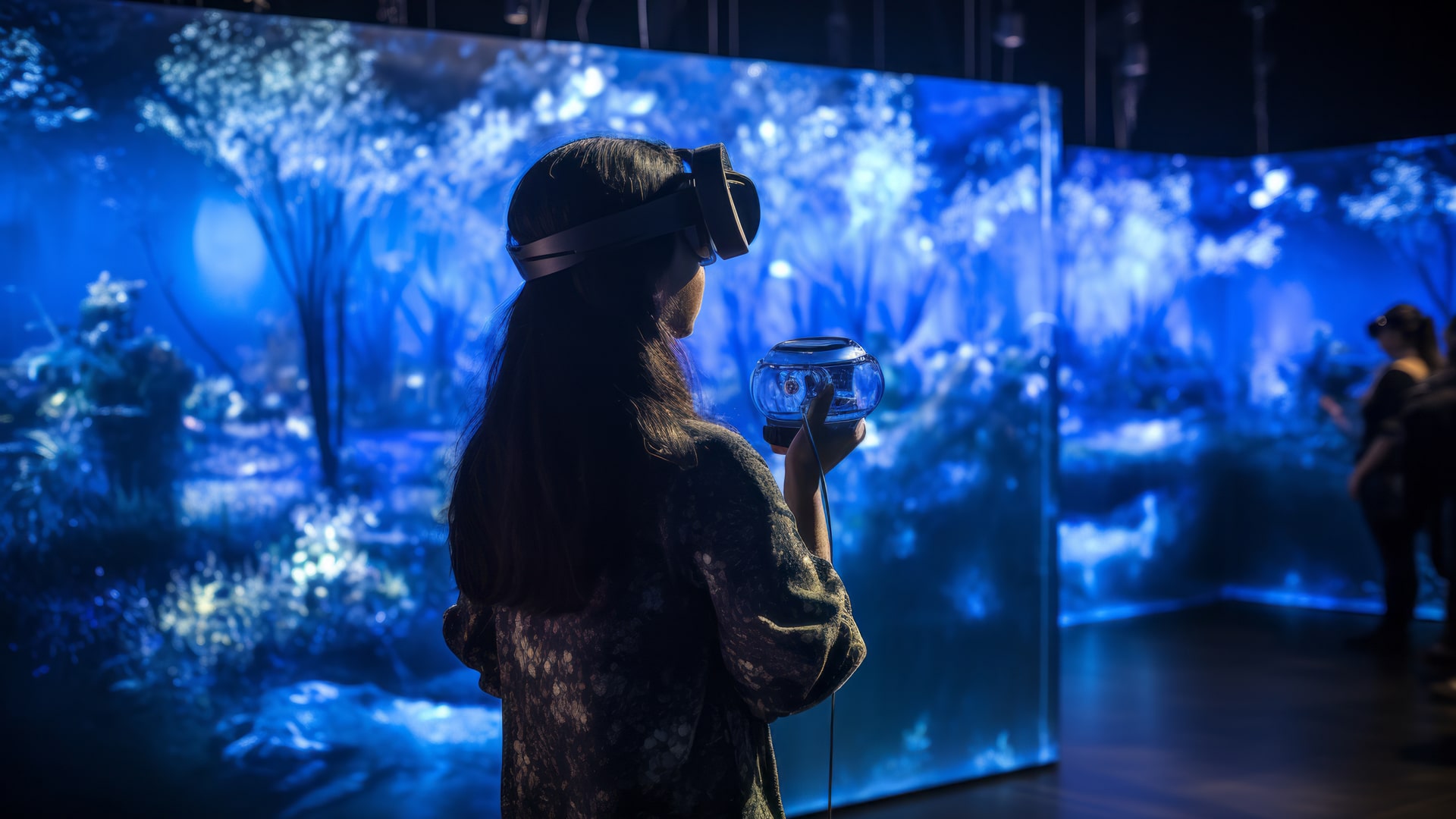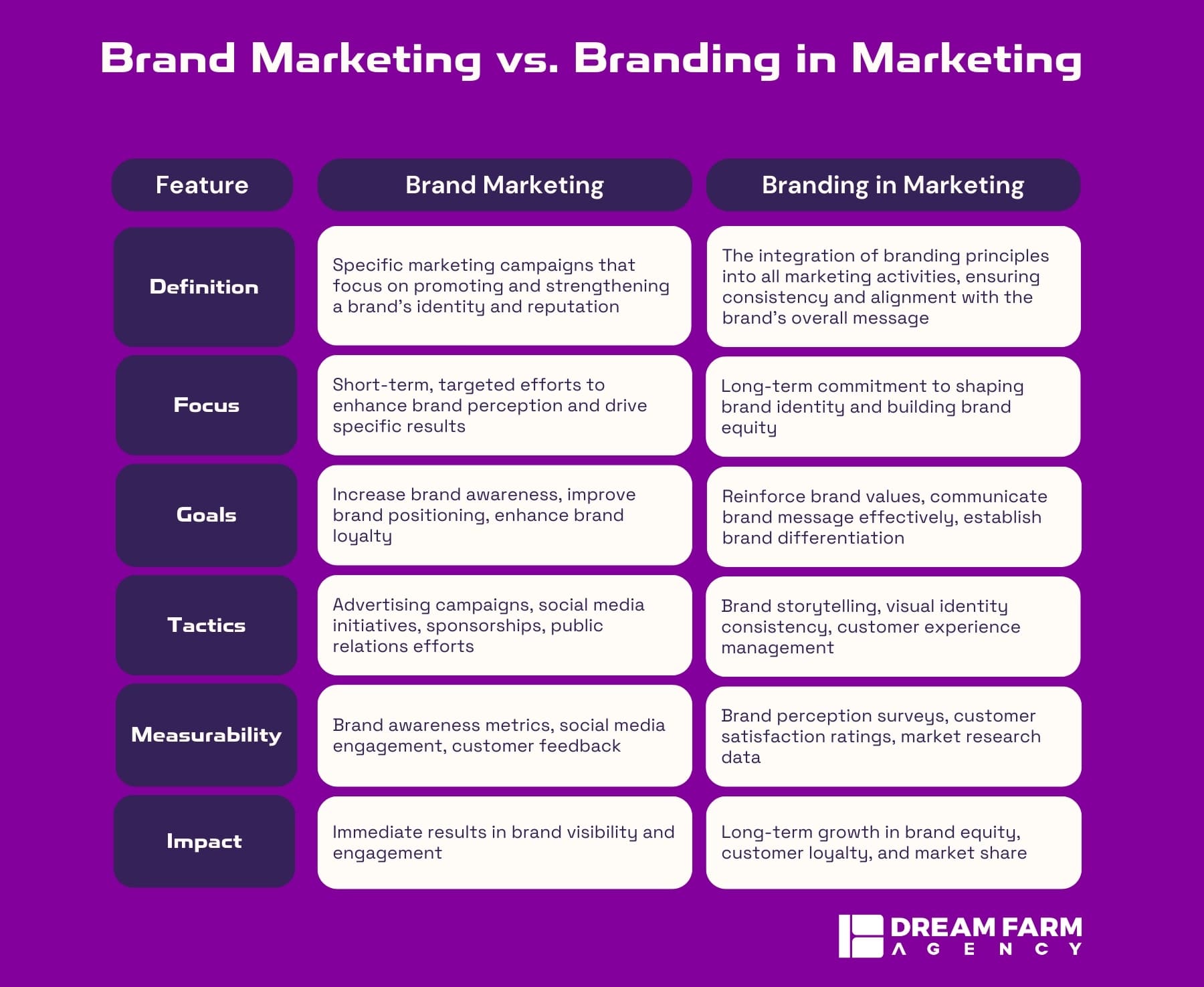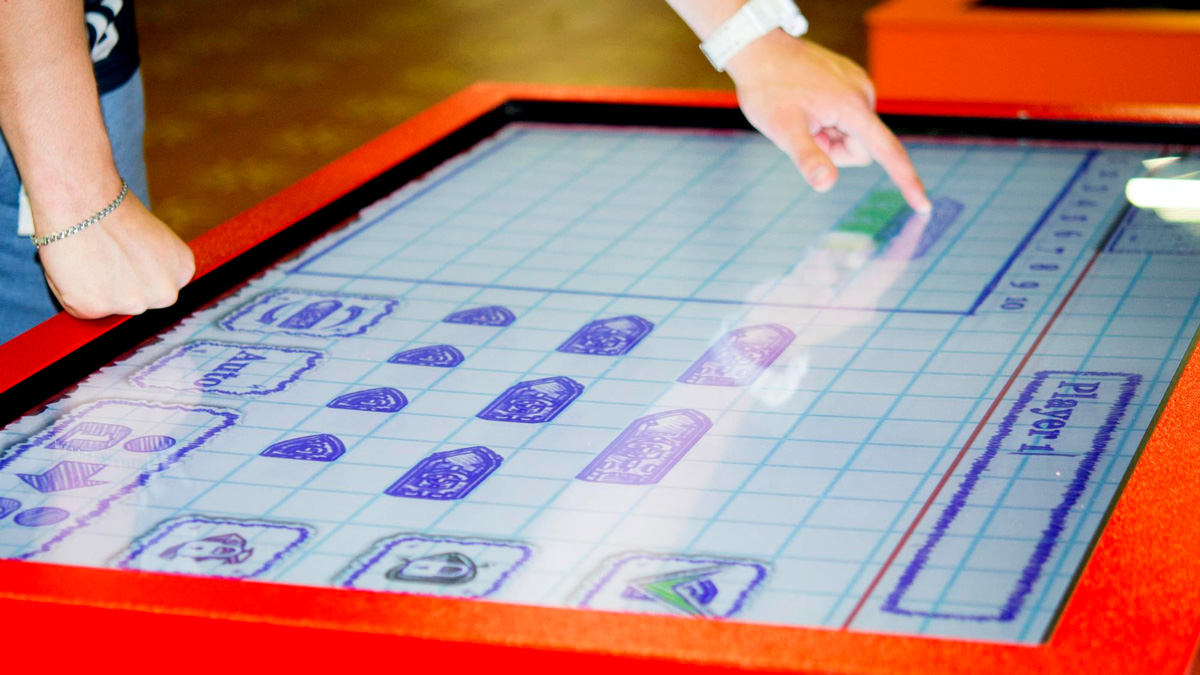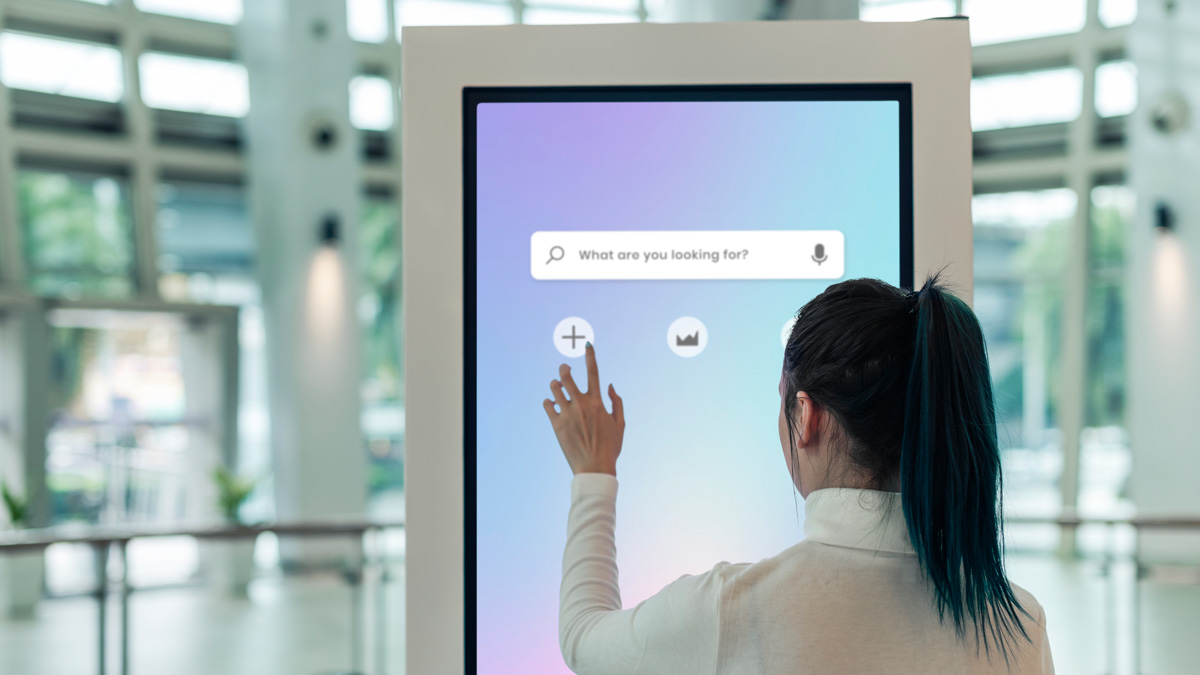
There are a limited number of ways to stay on the cutting edge of technology, differentiate your brand, and drive customer loyalty simultaneously. One of them is to create an interactive experience.
Keep reading to learn more about these experiences, what they bring, and how to leverage them for your niche.
What is Interactive Experience?
An interactive experience is a type of engagement where users actively and heavily participate and influence the content or outcome through digital interfaces, physical interactions, or immersive environments.
Participation is what primarily sets these experiences apart. When you invite your users to a virtual world or an interactive gallery, you’re empowering them to create something meaningful or experience something they care about like never before.
Interactive experiences can take many forms, most of which blend the physical and digital worlds, from massive interactive events to simpler online campaigns.
You’re probably already familiar with quizzes and other well-known forms of interaction, so we won’t devote much space to them in this piece.
In fact, we have a wide range of interactive Actions; if you remember, the first websites were Static, meaning that there was no interaction, and users just visited and saw web pages. After years, web pages have become dynamic, meaning users can take action by writing comments, customizing product options, etc.
The world is shifting, and so are user preferences. People today want to be part of something exciting, and yes, they are ready to engage, but it’s up to your brand to create that experience.
If you’re thinking about adding interactivity to your promotional plans, our team is here to guide you every step of the way and answer all your questions. Let’s make it happen together.
Learn more
Now, we have an interactive experience, meaning that users heavily participate in consuming content or playing a role in a campaign like a game!

The most significant difference between simple interactivity and interactive experience is:
- Level of interaction
- More involvement of emotions and Actions
- Amount of user participation
If we consider this range as a spectrum, It will look like this diagram.

Before we go to the examples, let’s go over why they were created in the first place.
Benefits of Interactive Experiences
Well-made interactive experiences are always received very positively, so the list of their benefits goes on and on. We have listed four essential benefits below.
Engagement is gold in the Attention economy
As you’ve already realized, interactive experiences give more user engagement.
You’re allowing users to invest time and energy in what your business offers.
If your users seize the opportunity and end up with valuable memories, lasting emotions, or branded deliverables, your job is done! You’ve dramatically increased engagement, upgraded your reputation, and improved brand recall, all in a single interactive immersive experience.
Multi-Sensory interaction
We want to clarify that user engagement isn’t just about visual and auditory elements. Interactive experiences can (and should) also engage the other senses to create a fully immersive environment. Multi-sensory engagement happens when you include touch, smell, and taste to make the experience richer and more memorable.
Consider a virtual reality experience incorporating haptic feedback, allowing users to feel textures and movements. Or imagine an event where scent diffusers release smells that match the visual and audio cues. These multi-sensory elements can transform a simple interaction into a profound, immersive experience that resonates personally.
When something resonates with you personally, it evokes positive emotional and psychological responses toward your brand. (i.e., more user satisfaction and reinforced loyalty.) The more senses you involve, the more your audience will remember and appreciate the experience!
Personalized User Journeys
We’ve mentioned that participation is the core of successful interactive experiences. You can reward each user’s participation with personalized journeys, making your campaigns even more special.
When you tailor interactions to individual preferences and behaviors, you show users that you understand and value them as individuals. This personal touch enhances user satisfaction and builds a stronger, more loyal customer base. (Loyalty is next on our list of benefits.)
Consider how data-driven insights can customize experiences in real time. A very doable example is an interactive website that could adapt its content based on user feedback, offering recommendations and pathways that align with their interests. Or a virtual tour could adjust its narrative to highlight areas that resonate most with a user’s past interactions.
Note that personalization isn’t simple customization; it’s about creating a unique journey for every user.
By leveraging AI and machine learning technologies, you can analyze user data to predict and respond to individual needs and preferences. (Don’t worry if you don’t fully understand how to do it. Some of the more sophisticated examples in the next section will show you how!)
When users feel that their experience is uniquely theirs, they are more likely to engage deeply, remember the experience, and develop a lasting loyalty to your brand. Personalized user journeys shift from passive interactions to active, meaningful engagements. Expect them to deliver both immediate and long-term benefits for your business!
Boosted Brand Loyalty
If you have read the article so far, you have guessed that good interactive experiences inevitably mean more loyal customers.
It’s relatively straightforward: an interactive experience campaign encourages your audience to bring their personality and see what they can do with it in the context of your brand. And when your brand becomes that personal and immersive, it’ll be like a reliable friend or companion. You don’t easily let go of such a caring brand!
Social engagements are also bold in interactive experience campaigns. When someone connects with your brand deeply, they’re inclined to share the experience. Facilitate social media sharing, and thanks to word of mouth alone, you will boost brand loyalty and advocacy.
Improved Learning & Retention
We know that gamified, interactive experiences are already doing wonders for the education sector. But don’t worry; you can reap this benefit regardless of your industry. You just need to capitalize on the fact that everyone wants to learn something.
So, what does your audience expect to learn from your brand? For example, we are a marketing agency, and we understand that our audience always wants to understand why we do what we do for them.
So, we can make an interactive, immersive experience in which our audience puts on VR headsets and plays a marketing video game that engages all their physical senses and caters to their learning style as they level up.
This and the real-world examples that follow will engage your audience on multiple levels, teaching them what you do best and making learning so enjoyable that the information may just become long-term memory.
10 Examples of Interactive Experiences
Let’s dive into some examples to get a real sense of what successful interactive experiences entail.
1. Burger King’s “Whopper Detour”
This may not be the cutting-edge immersive experience we have been building toward, but bear with us. It’s a thought-out campaign that uses basic technology.
Burger King’s “Whopper Detour” cleverly used geo-location. Here’s the story: in 2018, Burger King had people install their app and then actively told them to go to McDonald’s! When the users reached a McDonald’s, the app gave them a 1-cent Whopper at Burger King. Clever, isn’t it?
This innovative strategy drove app downloads and played on the intense competition with a fun twist. Compare this with the “Burn That Ad” campaign we have discussed in our guide to interactive campaigns, and aim to be at least as interactive as Burger King sometimes!
Here’s the full video, which also reflects the brand’s personality perfectly:
2. Apple’s “Today at Apple” Sessions
Here’s another massively successful campaign that works with human connection first and technology second. We’ve included this and “Whopper Detour” to tell you that you don’t necessarily need to deliver sophisticated interactive event experiences to connect with your audience and be interactive.
Apple’s “Today at Apple” sessions offer free interactive workshops at its stores. These workshops allow Apple product owners to learn photography, coding, music production, and more. They even have kid-friendly programs!
These hands-on sessions teach users something, showcase Apple products in action, and create a memorable retail experience. You can get a sense of these sessions in this video:
3. Chinese interactive museums
Imagine entering a museum and being transported back in time, walking through ancient streets, or interacting with historical figures. Chinese museums offer this experience by integrating VR and AR technologies. Visitors can now enjoy immersive and interactive exhibitions, bringing history and culture to life in new ways. For instance, VR headsets allow users to explore reconstructed ancient cities, while AR applications overlay digital information onto real-world artifacts, creating a dynamic and engaging educational journey.
4. River of Grass: Virtual Reality Interactive Everglades Tunnel Exhibit
The “River of Grass” Interactive Exhibit offers a captivating and educational experience,
bringing the unique ecosystem of the Everglades to life through cutting-edge technology.
Using VR and AR, visitors can virtually navigate the vast wetlands, encounter diverse wildlife, and understand the intricate environmental balance of this region. Interactive displays provide hands-on learning opportunities, such as simulating water flow and its effects on the habitat.
This exhibit highlights the ecological importance of the Everglades and emphasizes conservation efforts, making it a must-visit for nature enthusiasts and educators alike.

5. National Geographic’s “Genius: Aretha” Interactive Website
What if you don’t have huge spaces like Google or Apple? You can always make an immersive Progressive Web App like National Geographic did to complement the series “Genius: Aretha.”
You could explore Aretha Franklin’s story through multimedia content, listen to her music, and learn about her impact on music and culture. This website isn’t the only one of its kind, and PWAs are pretty common right now. Still, the technology isn’t at its limits, and there’s much more room to adopt and improve it!
Unfortunately, the website was down at the time this article was written.
6. Amazon’s “The Marvelous Mrs. Maisel” Experience
“The Marvelous Mrs. Maisel” has made Rotten Tomatoes’ 25 best TV shows in the last 25 years and won 3 Golden Globes. To promote the show even further, Amazon created an interactive experience in 2018 where fans could transport to the 1950s with AR and other technologies.
Customers could virtually try on vintage outfits and explore iconic locations from the show, offering an immersive peek into its vibrant world. This innovative experience brought the beloved series to life, engaging audiences with a nostalgic, interactive twist.
Here’s everything the experience had to offer, in a nutshell:
7. TeamLab’s “Bubble Universe”
TeamLab is an art collective, and “Bubble Universe” is one of their latest interactive experiences. It’s a stunning, one-of-a-kind example of interactive art. Visitors step into a digital cosmos where they can manipulate orbs of light with their movements and devices.
The immersive light and sound environment responds dynamically, creating a unique experience for every visitor. Who knows how many inspirations you can draw from this place or their other exhibitions? Even the official video is mesmerizing:
8. “The Void” VR Experiences
So far, we haven’t mentioned video games as sources of infinite interactive experiences. We didn’t know which role-playing game to pick, so we opted for a live physical experience that could host games or other fictional universes.
Imagine stepping into your favorite movie or game. “The Void” offers just that, merging physical environments with VR to create hyper-realistic adventures. Whether you’re fighting ghosts in “Ghostbusters” or exploring galaxies in “Star Wars,” these experiences will blur the line between the virtual and real worlds. See it in action:
Again, your interactive experience could be a less sophisticated game, but it’s good to see how high you can aim!
9. Refik Anadol’s “Machine Hallucination”
“Machine Hallucination” by Refik Anadol is another breathtaking digital art installation, but this time with an AI twist. Utilizing millions of New York City photographs, Anadol’s AI algorithms create dynamic, immersive visuals that transform data into a kaleidoscope that explores the intersection of artificial and human intelligence.
Visitors are surrounded by a 360-degree projection, making them feel like they are stepping into the neural network’s dreams. This experience redefines how we see urban spaces through the lens of technology. Here’s a sneak peek into this blend of art and AI:
Note that these artistic installations are state-of-the-art, and their possible applications in business (which you might be looking for) are yet to be fully explored.
10. Illuminarium’s WILD: A Safari Experience
Illuminarium’s WILD takes visitors on an immersive virtual safari like no other. Utilizing 4K laser projection, 3D audio, and haptic feedback, this experience brings the African savanna to life. Guests can interact with lifelike animals in their natural habitats, feeling every rumble and roar. The cutting-edge technology makes you feel as if you are truly walking among elephants, lions, and other wildlife. Here’s an intro video:
Challenges & Considerations
Cutting-edge technology always comes with unexplored areas, and each of those areas brings challenges.
Below are some of the most pronounced challenges in interactive experiences today.
Technical Challenges in Creating Interactive Content
Think of the examples above. Don’t they get bigger and more impossible-looking as they get more sophisticated? Developing such truly immersive experiences always demands a deep understanding of every piece of technology involved. It’s never an easy DIY feat!
Still, don’t let that scare you! If you have limited resources, aim for a level of complexity you know you can handle. For example, you could rent a space, install big monitors, and have Kinect cameras or even smartphones capture users’ movements and respond in real time. (You may even opt for free motion capture software!)
Whenever you feel like you need something even more immersive, you can opt for laser scans, advanced mocap, game engines, heavy-duty hardware, etc.
Cost & Resource Allocation
Interactive experiences often require significant costs and resources. Start by hiring the specialists who can do everything we just listed in the item above! (You could also make it easier on yourself by outsourcing interactive experiences.)
Balancing costs and effectiveness might not be the easiest, so go for highly efficient planning and execution here.
User Accessibility
You can consider accessibility from two perspectives. The first is the prevalent perspective that says you should make your experiences accessible to a wide range of users with different abilities and preferences.
The second perspective is especially important for international companies that want to create interactive user experiences. You might have noticed that many examples we covered above are available only in a few select countries. This is due to costs, regulations, and difficulties in each location and country. Looking at accessibility using this lens, you’ll find that interactive experiences still have much more potential worldwide.
Data Privacy & Security
Interactive experiences significantly impact users, so it’s fair for them to have privacy and security concerns. Many of these experiences even rely on collecting and processing data. Companies should ensure that they comply with relevant regulations like the General Data Protection Regulation (GDPR) or the California Consumer Privacy Act (CCPA).
We encourage you to also be transparent and straightforward with your users. You should specify what data you collect and explicitly obtain user consent, then take every measure to encrypt and safeguard that data. You can even set an example in privacy and destroy most of the data after the necessary use.
Possible User Fatigue
If you’ve ever played video games for a couple of hours, you know how the screens and controls can cause fatigue that lasts for hours. (And that happens with intuitive, well-designed controllers like PlayStation’s.) It’s important to tailor the length and controls of your experience in a way that you don’t cause lasting fatigue.
Making an immersive experience can be quite immersive itself! Don’t let it make you forget about the fine print. Make the monitors eye-friendly, design the interface to be intuitive, provide clear tutorials, give the users breaks when necessary, and do anything else that might be excluded from a bird’ s-eye view of the project.
The key to mitigating this challenge is to invest in iterative design processes and user testing. Iterative design improves your controls over several steps, and user testing provides valuable feedback that informs respective decisions.
Possible Lack of Human Touch
Technology is the backbone of interactive experiences, but there’s a risk of losing the human touch that makes many interactions meaningful.
Suppose you rely too much on technological accomplishments. In that case, you may create a fully immersive experience that nonetheless makes users feel like they’re interacting with a machine rather than a brand that cares about them.
An example you might have seen can be a customer service chatbot that efficiently handles queries but lacks the empathy and understanding of a human representative. While the technology is personalized and impressive, the absence of a personal connection can leave users feeling undervalued and frustrated.
Imagine an immersive virtual museum tour with AI-driven guides. While the
technology is impressive and the AIs mean no harm, the lack of live human interaction can make the experience feel a bit empty. Users might miss a human guide’s personal stories or nuanced responses! This can lead to a sense of detachment, reducing the emotional impact of the visit.
Overall, use whatever cutting-edge technology you can, but remember to make it as warm, personable, and human as possible.
Future Trends in Interactive Experiences
As you’ve read and seen, interactive, immersive experiences thrive on the latest technology. Here are some of the trends we’re following at the moment.
Artificial Intelligence (AI)
We understand that AI is all the rage these days, but the more you work with it, the more you realize there’s still much room for it to evolve as it is or in the context of interactive experiences. Companies are just starting to use AI fully in interactive experiences.
As an example of AI’s application in interactive experiences, it’s reasonable to leave the personalization of your interactive content experiences to AI. Plus, as we saw in “Machine Hallucination,” you can create stunning experiences with already available AI. Imagine everything that could be made with better AI models and more data!
Extended Reality (XR)
Extended Reality is an umbrella term encompassing Augmented, Virtual, and Mixed Reality technologies. Although AR and VR have already been explored a lot, they have yet to revolutionize life as we know it. (MR is even less explored.) This is partially because these technologies are still expensive and not yet as widely available as, for example, 4G technology.

Still, we believe the day we can weave XR into everyday life isn’t too far away. When we do, interactive experiences can take on a whole new level of immersion!
Haptic Feedback & Sensory Experiences
The future of interactive experiences lies not only in visual and auditory stimuli but also in engaging other senses, such as touch and smell. Mixed reality already relies on haptics, but fully incorporating touch in virtual experiences still has a long way to go. Smells are even farther off, as they have only just found their way to marketing and not in a sustainable way.
Still, we remain multifaceted creatures with five senses. We’ll find a way to make our virtual experiences even more realistic using those five senses!
Conclusion
Interactive experiences are a gold mine of untapped opportunities. In this article, we covered what they are, why use them, what challenges they bring, and what we expect from them in the future. We also hope to have put you on the lookout for more examples like the ones mentioned!
If you need help creating an interactive experience for your brand, don’t hesitate to reach out.
Arya



